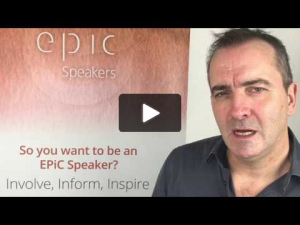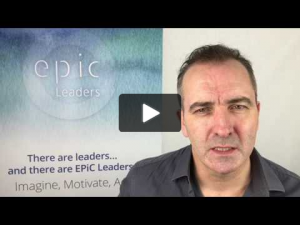
It’s nigh on impossible to hide what we are thinking. We expose ourselves all day, every day. That is, what we are thinking leaks out in our facial expressions, our physiology, the language we use and our tone of voice.
It’s not that people can necessarily know exactly what we are thinking, we leak just enough for others to spot something. An inconsistency, conflict or judgement. We can’t help but put our feelings out there, whether we are face to face, on the phone or in writing and what’s more – like trying to examine one’s own eyeball, it is really hard to see for ourselves the underlying message we are giving out.
Why does this matter?
It matters more now than ever because of the conscious move towards building trust in business. Even if we think we have been really careful about how we phrase something, our true intent is revealed. So if our true intent is not in line with our stated intent, we risk losing the trust of those we are working with. Or put it another way, we piss people off.
Have you ever had a situation where you can’t quite put your finger on it, but you just don’t believe someone, or they irritate you and you don’t really know why? Or maybe you feel manipulated in some way? It might well be that you have subconsciously picked up on an incongruence between your understanding of the situation and what is actually taking place. The discomfort that rises up in your body draws your attention to it, allowing you to probe a little and when satisfied, feel comfortable again.
Much has been said about emotional intelligence at work and its importance in building trust. It can be really confusing. Some people who believe they have high empathy, come out as having low empathy, and there are many who feel inside that they are emotionally intelligent yet, they are told they are not. Remember the song – ‘I’m just a soul who’s intentions are good, Oh Lord, please don’t let me be misunderstood.’
There are many schools of thought around Emotional Intelligence. My belief is that it is primarily a matter of intent. Get that clear, and everything else follows. Everyone has the capacity to be emotionally intelligent. Everyone too has the capacity to be emotionally ‘un’intelligent. The variable is not the person, but the intention of the person.
Imagine you are in a meeting about a new project, sponsored by the CEO:
Your intention is to build trust between members of the team. What might you do? Offer teas, coffees etc… Outline an agenda… Summarise your understanding of what is being said… Listen intently to what is required of you… Smile and offer your assurance that you have taken the ideas on board… Use open gestures… Offer your appreciation towards others for their contribution or viewpoint… Freely share your perspective… These are all things you would do naturally, without giving it a second thought.
Imagine now that in your opinion, your colleague is getting too much attention for his mediocre ideas and you want to reassert yourself as the expert in your field. What would be different in your behaviour? You are unlikely to offer the drinks, that would be someone else’s role… You will want to talk about solutions, why one will work and not the other. You will want to be sure everyone present understands the rationale behind your point of view… And you will look for reasons to promote your ideas and to dismiss your colleagues ideas in favour of your own.
Finally, imagine your intent is to get others to like you. You might laugh and smile if challenged… You might find it hard to support your own view point. More likely to be swayed by the arguments of others… You are likely to tell people what they want to hear, even if it is not what you believe… Perhaps you are keen to take on jobs that others aren’t interested in doing…
The same person with different intentions will behave very differently. As you will see only one of the three examples is focussed on the needs of others.
Lining up our intent with the aspirations of the task helps to build trust and empathy.
To find out how The Performance Business can help your company, call Lucy on 01932 888885











